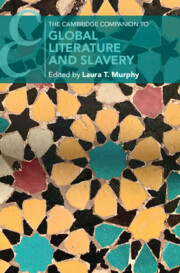Book contents
- The Cambridge Companion to Global Literature and Slavery
- The Cambridge Companion to Global Literature and Slavery
- Copyright page
- Contents
- Contributors
- Acknowledgments
- Chronology
- Introduction
- Part I Contexts and Contestation
- Part II Forms and Figures
- Chapter 3 Speculative African Slaveries
- Chapter 4 Contemporary and Historical Slavery in West African Digital Literature
- Chapter 5 Enslavement and Forced Marriage in Uyghur Literature
- Chapter 6 Consuming Slavery in China’s Epic Domestic Novels
- Chapter 7 The Language of Slavery in the Mongolian Literary Tradition
- Part III Legacies and Afterlives
- Part IV Metaphors and Migrations
- Further Reading
- Index
- Cambridge Companions To …
Chapter 7 - The Language of Slavery in the Mongolian Literary Tradition
from Part II - Forms and Figures
Published online by Cambridge University Press: 15 December 2022
- The Cambridge Companion to Global Literature and Slavery
- The Cambridge Companion to Global Literature and Slavery
- Copyright page
- Contents
- Contributors
- Acknowledgments
- Chronology
- Introduction
- Part I Contexts and Contestation
- Part II Forms and Figures
- Chapter 3 Speculative African Slaveries
- Chapter 4 Contemporary and Historical Slavery in West African Digital Literature
- Chapter 5 Enslavement and Forced Marriage in Uyghur Literature
- Chapter 6 Consuming Slavery in China’s Epic Domestic Novels
- Chapter 7 The Language of Slavery in the Mongolian Literary Tradition
- Part III Legacies and Afterlives
- Part IV Metaphors and Migrations
- Further Reading
- Index
- Cambridge Companions To …
Summary
Although Mongolian literature features many enslaved characters, slavery as punishment, and slavery as metaphor, the nature of slavery and the identity of the enslaved is rarely mentioned. At the same time, the language of slavery was varied and changed over time in different literary contexts. Focusing on two terms of slavery, boġol and kitad, this essay argues that occupational hierarchies informed the language of slavery in Mongolian from the thirteenth to the nineteenth centuries. The terms boġol and kitad originally indicated servants or dependant people but came to mean slave in general. In historical literature, Buddhist didactic texts translated from Tibetan, and epic literature the usage of terms of slavery reflects the multivalent nature of the terminology which defies rigid, formalistic analysis. However, in the twentieth century, Mongolian scholars reinterpreted slavery as it appears in literary texts through the theory of Marxist historical materialism. The Marxist approach compared Mongolian slavery with formalistic Greco-Roman legal definitions of slavery and thus obscured the historical and literary significance of slavery and enslaved characters in the Mongolian literary tradition.
- Type
- Chapter
- Information
- The Cambridge Companion to Global Literature and Slavery , pp. 108 - 132Publisher: Cambridge University PressPrint publication year: 2022

